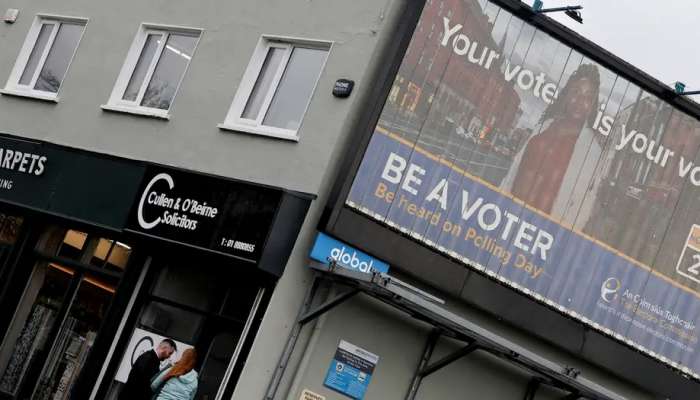
Dublin: Polls closed on Friday in Ireland's general election amid a tight race between the incumbent coalition parties and the opposition party Sinn Fein.
According to exit polls, Ireland's three largest parties were projected to get roughly equal shares of the vote, with Sinn Fein slightly ahead on 21.1%, Fine Gael on 21% and Fianna Fail on 19.5%.
If they stand, the exit polls would represent little change to the current make-up of the Irish parliament, meaning that Fianna Fail and Fine Gael would likely hold on to power in coalition with each other and a few smaller parties.
The exit poll is only indicative of the support base for each political parties, but the final results will be determined by transfer votes, which is a key part of Ireland's proportional representation electoral system.
When will we see the final results?
Ballot counting will begin in earnest on Saturday morning. Final results are not expected for several hours or even several days.
The ballot will see a total of 174 seats of the lower chamber of parliament — the Dail — being filled, which is more than ever before.
Over 3 million voters are registered to cast their ballot in an election that has been focused on the country's cost-of-living and housing crises, the response to an uptick in immigration, and economic management for potential future trade shocks.
Who are the major parties?
Opinion polls had put the country's three big parties — center-right Fine Gael and Fianna Fail, and the left-wing Sinn Fein party that calls for Northern Ireland to exit the UK and become a part of a united Ireland — each at around 20%.
Fine Gael and Fianna Fail — two parties that came up from opposing sides of the Irish Civil War in the 1920s — set aside a nearly century-old rivalry and agreed to share power after the general election in 2020 saw an inconclusive result.
Mary Lou McDonald on the campaign trail
Sinn Fein — which won the popular vote in 2020 — failed to run enough candidates, meaning it did not secure enough seats in the Dail to be given a chance to form government.
Sinn Fein's leader Mary Lou McDonald has fielded many more candidates this time around and has called on Irish voters to elect a government of change without Fine Gael or Fianna Fail.
The left-wing nationalist party is also active in Northern Ireland where it currently has a majority in the parliament. One of the party's main goals is to unite the island of Ireland, something that is provisioned in the Good Friday Agreement, should a majority of voters back such a move in a referendum.
Snap vote
Friday's vote comes after Irish prime minister and Fine Gael's leader Simon Harris called a snap election earlier this month.
In April, Harris became Ireland's youngest-ever taoiseach, or prime minister, at age 37 after replacing his predecessor Leo Varadkar.
He is popularly touted as the "TikTok taoiseach" for being social media savvy, an advantage he has used to re-invigorate Fine Gael.
Fine Gael showed a solid lead as it entered the election campaign.
However, the party suffered a setback after a video of Harris appearing to be rude and dismissive to a care worker on the campaign trail went viral.
When the snap election was called, Sinn Fein was also marred by a series of controversies, which include former party members writing job references for a colleague who was later convicted of child sex crimes.
The calculations to form a majority could be tricky with several smaller parties and many independents also potentially vying for a place in government.